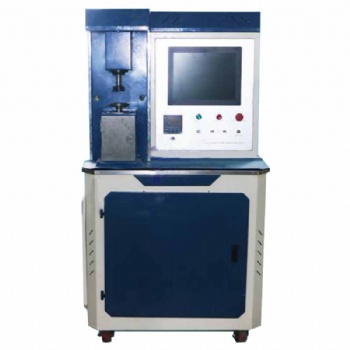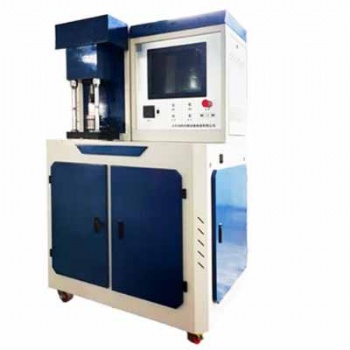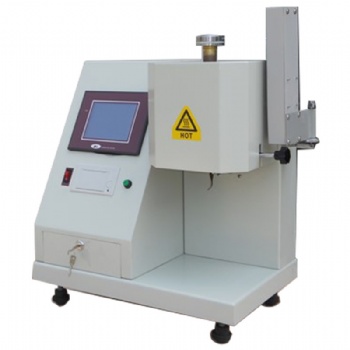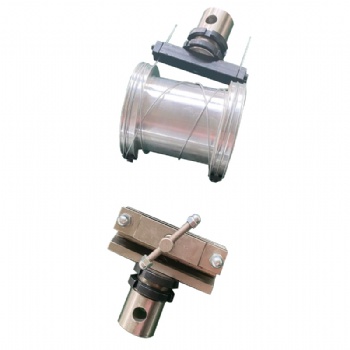Composite material V-notch shear performance tensile testing machine
Composite material V-notch shear performance tensile testing machine
1. introductions
The composite material V-notch shear performance tensile testing machine is controlled by computer software, which can display the test force, test time, test curve, displacement or deformation in real time. After the test, the test results can be automatically saved, and the test report can be printed by connecting to a printer. The composite material V-notch shear performance tensile testing machine is equipped with a special fixture to apply a load to the test specimen with a V-notch, and a shear stress field is formed in the central area of the sample notch, so as to measure the shear performance of the material.
2. relative test method for composite material V-notch shear performance tensile testing
GB/T 30970 test method for the shear properties of polymer matrix composite materials by V-notched beam method
ASTM D7079 standard test method for shear properties of composite materials by V-notch rail shear method
3. Relevant test methods for design, manufacture and inspection of tensile testing machine for V-notch shear performance of composite materials
GB/T2611 general requirements for testing machines
GB/T16491 electronic universal testing machine
GB/T16825.1 verification of static uniaxial testing machines --- part 1: tension / compression testing machines --- verification and calibration of the force measuring system
ISO7500-1 metallic materials--- verification of static uniaxial testing machine --- part 1: tension / compression testing machines --- verification and calibration of the force measuring system
ASTM E4 standard practice for force verification of testing machines
EN 10002-2 tensile testing of metallic materials --- part 2: verification of the force measuring system of the tensile testing machine
4. technical specifications of composite material V-notch shear performance tensile testing machine
No | Item | Specification | ||
1 | Force capacity | 20KN and lower | 30/50KN | 100KN |
2 | Measuring range | 1%-100%FS | ||
3 | Accuracy of force value | Less than ±1% of set value | ||
4 | Precision of displacement | 0.01mm | ||
5 | Accuracy of displacement value | ±1% | ||
6 | Deformation measuring range | 0.4%-100%FS | ||
7 | Accuracy of deformation measuring | ±0.5% | ||
8 | Resolution of deformation | 0.01mm | ||
9 | Force speed range | 0.005-5%FS/S | ||
10 | Accuracy of force speed | Less than ±1% of set value | ||
11 | Deformation speed range | 0.02-5%FS/S | ||
12 | Accuracy of deformation speed control | When set value is less than 0.05%FS,error is less than ±2.0% of set value When set value is more than 0.05%FS,error is less than ±0.5% of set value | ||
13 | Displacement speed range | 0.001-500mm/min | ||
14 | Accuracy of displacement speed | When speed is less than 0.01mm/min,error is less than ±1.0% of set value When set value is more than 0.01mm/min,error is less than ±0.2% of set value | ||
15 | Range of constant force, constant deformation, constant displacement control | 0.5%~100%FS | ||
16 | Accuracy of constant force, constant deformation, constant displacement control | When set value is less than 10%FS,error is less than ±1.0% of set value When set value is more than 10%FS,error is less than ±0.1% of set value | ||
17 | Accuracy of deformation speed | When set value is less than 0.05%FS,error is less than ±2.0% of set value When set value is more than 0.05%FS,error is less than ±0.5% of set value | ||
18 | Tension space | 700mm | 700mm | 700mm |
20 | Voltage | Single phase,220V±10%,50Hz(110V) | ||
21 | Motor power | 0.75KW | 0.75KW | 1.5KW |
22 | Dimension | 750x480x1700mm | 720x520x1800mm | 900x600x2100mm |
23 | Weight | 280kg | 350kg | 450kg |
china composite material V-notch shear performance flexural modulus measurement ductility tensile stress strain hysteresis cyclic loading testing parameters analysis machine tester equipment instrumnet system apparatus price factory supplier manufacturer
composite material tensile testing, carbon fiber tensile test, fiber-reinforced polymer tensile testing, composite elongation at break, tensile strength of composites, fiber matrix interaction in tensile tests, carbon fiber tensile testing
How to Select the Right Tensile, Compression, Bending, Shear, Peel, and Tear Testing Machine: Calculation Formulas with Examples
Selecting the appropriate testing machine for tensile, compression, bending, shear, peel, and tear tests requires careful consideration of multiple factors, including the force range, specimen dimensions, test standards, and machine capabilities. Below are the key calculation formulas to help determine the necessary machine specifications, along with examples for better understanding.
1. Tensile Testing Machine Selection
Tensile testing machines measure the maximum tensile strength and elongation of materials.
Key Formula:
Fmax=σmax × A
Where:
Fmax = Maximum required force (N)
σmax = Ultimate tensile strength of the material (MPa)
A = Cross-sectional area of the specimen (mm²)
Example: For a steel specimen with σmax =400MPa and cross-sectional area A =100mm²:
Fmax=400 × 100=40,000N (40kN)
A 50 kN tensile testing machine would be suitable.
2. Compression Testing Machine Selection
Compression tests determine a material's resistance to compressive forces.
Key Formula:
Fmax=σc × A
Where:
Fmax = Maximum required force (N)
σc = Compressive strength of the material (MPa)
A = Cross-sectional area of the specimen (mm²)
Example: For a concrete cube with σc =30MPa and A =1502=22,500mm²:
Fmax=30 × 22,500=675,000N (675kN)
A 1000 kN compression testing machine would be ideal.
3. Bending Testing Machine Selection
Bending tests evaluate the flexural strength of materials.
Key Formula for Three-Point Bending:

Where:
σf = Flexural stress (MPa)
F= Applied force (N)
L= Span length (mm)
b= Width of the specimen (mm)
h= Thickness of the specimen (mm)
Example: For a wooden beam with L=500mm, b=50mm, h=25mm, and requiring a stress of 10 MPa:

A 5 kN bending tester would be suitable.
4. Shear Testing Machine Selection
Shear tests determine the shear strength of materials.
Key Formula:
Fmax=τ × A
Where:
Fmax = Maximum shear force (N)
τ= Shear strength of the material (MPa)
A = Shear area (mm²)
Example: For an aluminum sheet with τ=90 MPa and A=200mm²:
Fmax=90×200=18,000N(18kN)
A 20 kN shear testing machine is recommended.
5. Peel Testing Machine Selection
Peel tests measure the adhesion strength between bonded materials.
Key Formula:

Where:
P= Peel strength (N/mm)
F= Measured force (N)
W= Width of the specimen (mm)
Example: For a tape with F=50N and W=25mm:

A peel testing machine with at least 5 N force capacity is required.
6. Tear Testing Machine Selection
Tear tests determine the resistance of a material to tearing forces.
Key Formula:

Where:
Ftear= Tear strength (N/mm)
F= Measured force (N)
t= Thickness of the specimen (mm)
Example: For a rubber sheet with F=100N and t=2mm:

A tear testing machine with 100 N capacity is needed.
When selecting a testing machine, ensure that the maximum force capacity of the machine is at least 1.2 to 1.5 times the calculated force to account for safety margins and unexpected variations. Additionally, consider compliance with relevant test standards (ASTM, ISO, GB, EN, JIS) and machine features such as speed control, data acquisition, and test automation.
By using the above formulas and examples, engineers and manufacturers can accurately determine the appropriate testing machine specifications for their specific material and application requirements.
Categories
- electronic universal testing machine
- hydraulic universal testing machine
- impact testing machine
- compression testing machine
- horizontal tensile testing machine
- manhole cover testing machine
- pellet compression testing machine
- material testing machine
- steel strand tensile testing machine
- rubber testing equipment
- plastic testing equipment
- load cell
- Böhme abrasion tester
- all testing machine and equipment
- ceramic tiles testing equipment
- asphalt mixture testing equipment
- footwear testing machine
- test fixtures
- torsion tester
- cupping testing machine
- friction and wear tester
Contact Us
- +86-18615632092
- wtbequipment@hotmail.com
- sophie-tester
- +86-18615632092














 售前客服
售前客服